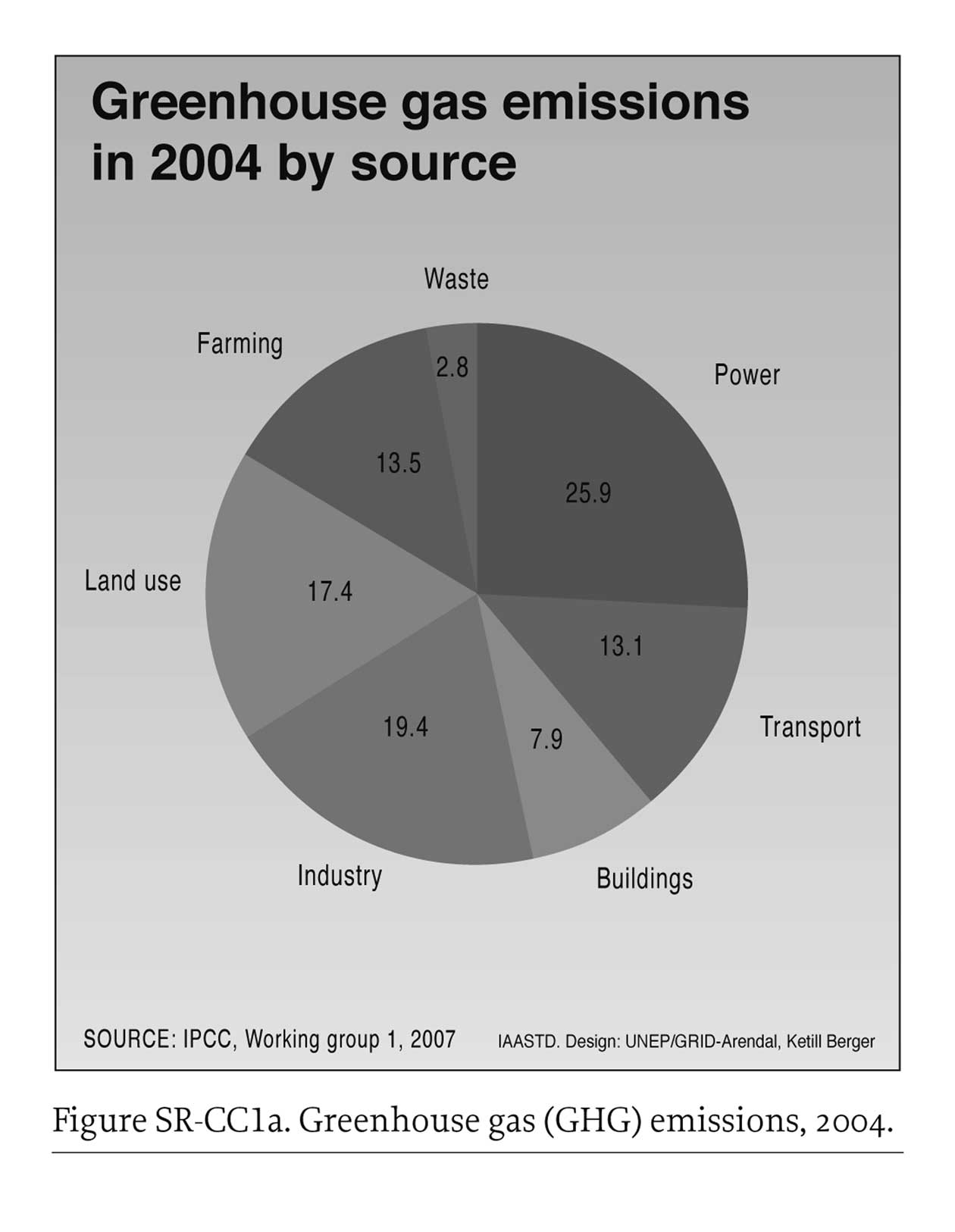
| Previous | Return to table of contents | Search Reports | Next |
| « Back to weltagrarbericht.de | ||
188 | North America and Europe (NAE) Report

Figure 5-4. Sources of GHG emissions. Source: IPCC, 2007.
emissions and 52% of N2O emissions in the EU. The role of agriculture both as a source of and as a sink for GHGs varies significantly across the NAE region because of the different agricultural policies and practices. Emissions also come from changes in forests and other woody biomass stocks, forest and grassland conversions and from the soil (IPCC, 2000b; UNESCO, 2006a). There is a clear trend across the whole NAE region to boost efforts to decrease emissions by replacing fossil fuels with liquid biofuels (IEA, 2006). 5.4.6.2 Uncertainties for the future How might GHG emissions develop in the future? |
|
late to the operation of the carbon cycle which is crucial in translating emissions into concentrations as well as the magnitude and behavior of vulnerable carbon pools (UNESCO, 2006a; IPCC, 2007a): Natural carbon pools could well turn into sources as global warming and deforestation continue. Some of the most vulnerable pools are (1) carbon in frozen soils, (2) carbon in cold and tropical peatlands, and (3) bio-mass-carbon in forests vulnerable to fire and insect infestations. Within the time span of our assessment (up to 2050) most of the IPCC emission scenarios are indistinguishable because of the inertia in our economic and technological systems. Furthermore, and as a result of this and the inertia also in the climate system, climate projections in the NAE region until 2050 are quite similar. Possible evolution of NAE climate and possible consequences for agriculture |
| Previous | Return to table of contents | Search Reports | Next |
| « Back to weltagrarbericht.de | ||